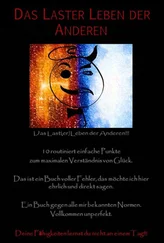The German cavalry went to war in 1914 all too conscious of its fragility. Apart from the effects of long-range, rapid- fire weapons, devastatingly demonstrated in the Wars of Unification, the cavalry’s self-image was of a specialized arm, demanding a spectrum of skills that required an extra, third year of service from peacetime conscripts. It was an equal shibboleth in the mounted arm that effective cavalry could not be improvised, and therefore the existing force must be carefully husbanded—not kept in the “bandbox” Lord Raglan proposed for British cavalry during the Crimean War, but in no way expendable like common infantrymen. Between 1871 and 1914, cavalry doctrine focused on reconnaissance and screening. These missions offered a chance to salvage the mythology of the arme blanche , albeit on a reduced scale. Charges en masse might be obsolete. German horsemen focused instead on the charge en petite: riding at the enemy in traditional style but at troop and squadron strength.
As early as 1905, automobile engineer Paul Daimler demonstrated a surprisingly advanced prototype armored car at the autumn maneuvers. It was dismissed as lacking practical utility. A couple of improvised armored trucks were attached to each cavalry division and used for fire support. Equally improvised detachments of machine-gun crews and riflemen in commandeered civilian cars did useful service occupying bridges and road junctions in advance of the horsemen. In 1915 the General Staff developed specifications for a purpose-built armored car. The resulting models carried two or three machine guns and were well armored for the time. One later model even had a radio. The cars also possessed rear steering positions, enabling them to reverse out of tight spots. That last was a useful quality, given the bulky shapes and high weights that rendered them visible on roads and limited their cross-country mobility to a point near zero.
In the war’s first year, both fronts saw their share of what an earlier generation of horse soldiers called “hussar tricks” of low-level derring do. In Poland, cavalry played an important role in the breakout from Lodz in November 1914 and division-strength raids periodically disrupted Russian communications and Russian equilibrium. The limited Russian road network, however, inhibited the use of the cavalry beyond the hit-and-run level. German generals also increasingly used their mounted troops to plug gaps in what was never a continuous front. Men and mounts alike were worn down for marginal advantages. In the West, beginning in 1915, the Germans cold-bloodedly reorganized their cavalry divisions as semi-mobile infantry or dismounted them altogether.
The fledgling air arm benefited disproportionately from these policies. The future Red Baron, Manfred von Richthofen, was not the only disgruntled troop officer who grumbled that he “had not gone to war to collect cheese and eggs,” and took to the skies instead. But when the German army mounted its final great offensive in March-April 1918, the limits of its infantry-artillery base grew increasingly obvious. The Germans could not develop their initial advantage in the war’s decisive theater. They could break into Allied defenses, and they could break through them. They could not break out.
In one sense Ludendorff ’s often-derided concept of “punch a hole and see what develops” resembles Erich von Falkenhayn’s concept for the 1916 attack on Verdun. Both were ultimately focused on the level of policy: Do so much damage that France in one case, and the Allies in the other, would be impelled to negotiate. When the coalition withstood the shock at policy levels, translating tactical victory to the operational level became decisive. It was not only that Germany lacked the force structure to make even a token effort. From Ludendorff down, no one with serious authority had a paradigm, a template, for making that transition. The oft-cited absence of a decisive operational/strategic focus for the offensive reflected two years of learning how to wipe out Allied gains by devastatingly successful local counterattacks whose decisive points were usually obvious. The vaunted storm troopers eventually first exhausted their bag of tactical tricks, and then exhausted themselves. The specially prepared “attack divisions” were bled white as Allied railroads and trucks reinforced critical sectors before the Germans could advance through them on foot. The result was stalemate, leading to exactly the kind of drawn-out fighting retreat that German planners and thinkers had predicted meant catastrophe, and then to final visions of an apocalyptic last stand in the Reich itself.
There were exceptions. Small detachments of armored cars served in Russia and Romania. One AFV (amored fighting vehicle, the general name and abbreviation for any form of battlefield armor) even found its way to Palestine, where it engaged in a brief firefight with two of its British counterparts before being abandoned by its crew. An improvised “assault group” formed around an infantry battalion that was riding requisitioned supply trucks bounced Romania’s Iron Gates in 1916 and held off a division until relieved. A cyclist brigade played a key part in the rapid overrunning of Russia’s Baltic Islands in 1917. The postwar Freikorps that fought in the Baltic used armored cars as assault vehicles against the Bolsheviks and, on one occasion, combined them with a truck-mounted rifle battalion in a counterattack. It was, however, General Hans von Seeckt who moved the German army from Sitz to Blitz.
AN ARISTOCRAT AND a Prussian Guardsman, General Hans von Seeckt fit none of the stereotypes associated with either. Educated at a civilian Gymnasium rather than a cadet school, he had traveled widely in Europe, visited India and Egypt, and was well read in contemporary English literature. During the war he had established a reputation as one of the army’s most brilliant staff officers. Having made most of that reputation on the Eastern Front, he was untarnished by the collapse of the Western Front, and a logical successor to national hero Paul von Hindenburg as Chief of the General Staff in the summer of 1918. In March 1920 he became head of the army high command in the newly established Weimar Republic.
Seeckt disliked slogans; he disliked nostalgia; he rejected the argument, widespread among veterans, that the “front experience,” with its emphasis on egalitarian comradeship and heroic vitalism that was celebrated by author-veterans like Ernst Jünger and Kurt Hesse, should shape the emerging Reichswehr. Instead he called for a return to the principle of pursuing quick, decisive victories. That in turn meant challenging the concept of mass that had permeated military thinking since the Napoleonic Wars. Mass, Seeckt argued, “becomes immobile. It cannot win victories. It can only crush by sheer weight.”
Seeckt’s critique in part involved making the best of necessity. The Treaty of Versailles had specified the structure of the Reichswehr in detail: a force of 100,000, with enlisted men committed to twelve years of service and officers to twenty-five. It was forbidden tanks, aircraft, and any artillery above three inches in caliber. As a final presumed nail in the coffin of German aggression, the Reichswehr’s organization was fixed at seven infantry and three cavalry divisions: a throwback to the days of Frederick the Great. Whatever might have been the theoretical hopes that the newly configured Reichswehr would be the first step in general European disarmament—when, presumably, the extra cavalry would give tone to holiday parades—Germany’s actual military position in the west was hopeless in any conventional context. In the East, against Poland and Czechoslovakia, some prospects existed of at least buying time for the diplomats to seek a miracle. Seeckt’s Reichswehr, however, faced at least a double, arguably a triple, bind. It could not afford to challenge the Versailles Treaty openly. It badly needed force multipliers. But to seek those multipliers by supporting clandestine paramilitary organizations depending on politicized zeal was to risk destabilizing a state that, though unsatisfactory in principle, was Germany’s best chance to avoid collapsing into permanent civil war.
Читать дальше
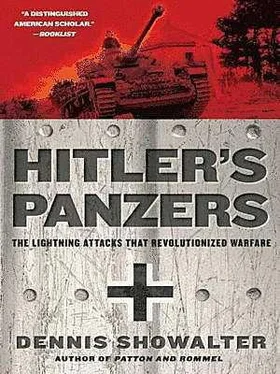
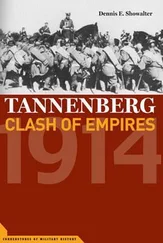
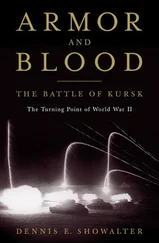

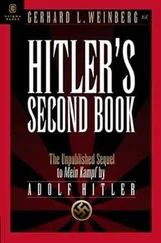


![Traudl Junge - Hitler's Last Secretary - A Firsthand Account of Life with Hitler [aka Until the Final Hour]](/books/416681/traudl-junge-hitler-s-last-secretary-a-firsthand-thumb.webp)
